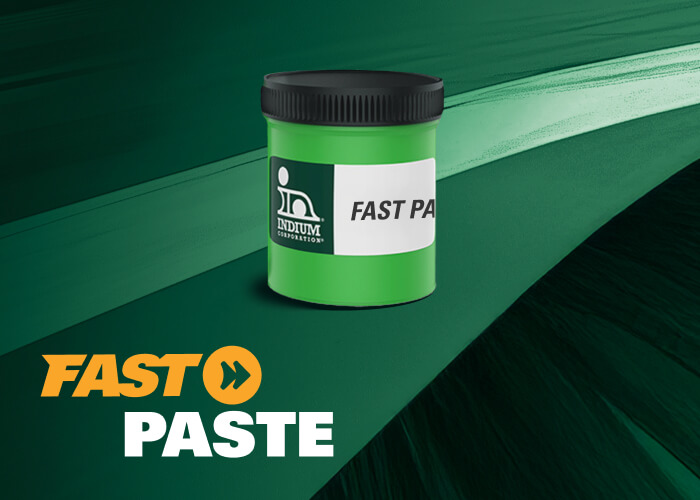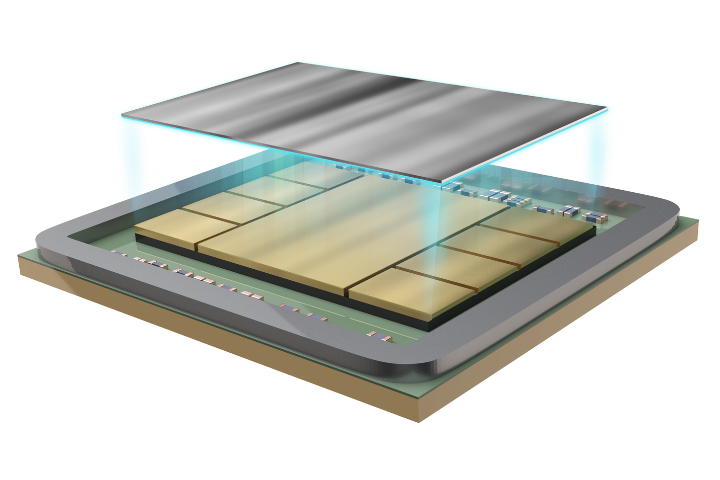While in South East Asia last summer, Indium's technical team and I had a chance to discuss flip-chip dipping processes with a major equipment vendor. One of the topics was device (bumped package or die) "pick-up" out of a flip-chip flux dipping tray, and how different factors affect whether the device is capable of being removed from the sticky flux. The same discussions are relevant to all flux and solder paste dipping processes, from flip-chip, to MEMS package assembly, to WL-CSP flux dipping.
Something that had been a mystery for a while was why small devices are more difficult to pick out of a dipping tray than large ones. This seems contrary to logic, since a smaller device:
- will be lighter (lower in mass), so this should make pick-up easier, not more difficult
- for the same I/O size and density (number of I./O's per unit area), the effect of extensional viscosity ("tack"), as discussed previously, should scale linearly with the device area. So there should be no effect of flux contact area.
We learned that there is a third aspect that needs to be considered: the accuracy of alignment of the device with the vacuum pick-up head.
This accuracy is a function of how carefully the center of the device aligns with the center of the pick-up nozzle. As can be imagined, the worst-case scenario is one where an inaccurate vacuum head placement must pick-up a package that has been allowed to move around in its overpack (tape & reel or waffle pack), and then dip it in the flux at a very high speed. In order to mitigate this effect, the vacuum head is always designed so that its contact perimeter (which is always smaller than the nozzle apparent diameter) will always be inside the die area. There is therefore a statistically-derived "keep out width" (KOW), which obviously has a greater negative impact as the package decreases in size.
The case for a simple situation using a circular nozzle is shown in the picture below.
It's simple math to show the effect as a function of package width for a square package, where the "% effective area" = Nozzle area / Package Area, as is shown below. Remember that the only force that acts to pull the device upwards is the difference in pressure between the outside and inside of the nozzle, times the area inside the nozzle.
Note that there are other factors that may also impact the ability to pick up small die and packages: all being related to a reduced pressure differential between the inside of the sealed package / nozzle cavity and the outside air:
- A small leak in the package / nozzle interface will more strongly impact the vacuum inside a small nozzle than inside a large one
- Atmospheric pressure may vary (height above sea level or weather conditions)
The best chance for a nozzle to pick up a small or otherwise problematic die out of a dipping tray is, therefore, through implementing one or more of:
- Low "tack" flip-chip or MEMS flux
- Nozzle effective area maximized by nozzle design and equipment tolerances (reduced KOW)
- Slow withdrawal from flux dipping tray
- Tighter tolerances on packaging "pockets" for tape and reel or waffle-packed die or packages
The tradeoffs here are that a low viscosity/tack flux may not be able to hold components in place prior to, or during, reflow, and that a slower, more precise, dipping and placement process reduces throughput.
Indium Corporation is currently expanding our range of dippable ultralow and near-zero residue fluxes and we will be teaching you more in coming months. Please feel free to share your findings with us.
Thanks to my friend Dr Hyoryoon Jo for coining the term "effective area".
Cheers! Andy





